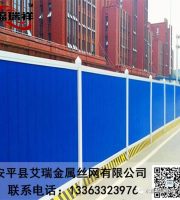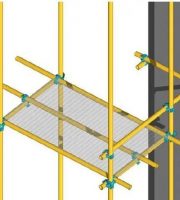Scaffolding is a commonly used temporary support structure in construction projects, consisting of steel pipes (48.3 * 3.6), fasteners, scaffolding, adjustable supports, and cantilever scaffolding made of steel. It is used to provide a convenient and safe working platform during the construction process, providing conditions for construction workers to stand, work, transport, and also facilitating equipment installation, material transportation, and other work. Therefore, scaffolding plays an irreplaceable role in construction projects..
After the completion of the foundation, before the installation of the frame;.
After the completion of the first step of setting up the large crossbar for large and medium-sized scaffolding;.
After setting up a height of 6-8 meters;.
Before applying load on the work surface;.
After reaching the design height (each layer of scaffolding for structural construction shall undergo one acceptance);.
After encountering wind or heavy rain of level six or above, the frozen area will thaw;.
● Discontinue use for more than a month;.
Before demolition;.
The surface of the steel pipe should be straight and smooth, without cracks, scars, layering, misalignment, hard bending, burrs, indentations, deep slides, and severe rust, and drilling is strictly prohibited; Steel pipes must be coated with anti rust paint before use;.
● Outer diameter 48.3mm, allowable deviation ± 0.5mm; Wall thickness 3.6mm, allowable deviation ± 0.36, minimum wall thickness 3.24mm; Vernier caliper inspection;.
● Should have a production license, quality inspection report, product quality certificate, and retest report;.
Cracks, deformations, and bolt slippage are not allowed; The contact area between the fastener and the steel pipe should not have oxide skin; The moving parts should be able to rotate flexibly, and the gap between the two rotating surfaces of the rotating fastener should be less than 1mm; The surface of the fasteners should be treated with rust prevention;.
The tightening torque value of the fastener bolt should not be less than 40N · m and should not exceed 65N · m;.
The design value of the compressive bearing capacity of adjustable braces should not be less than 40kN. Should have a product quality certificate and quality inspection report;.
The outer diameter of the adjustable support screw shall not be less than 36mm, the length of the adjustable support screw and nut rotation shall not be less than 5 buckles, and the thickness of the nut shall not be less than 30mm. The length inserted into the upright pole shall not be less than 150mm. The thickness of the support plate shall not be less than 5mm, and the deformation shall not be less than 1mm. The welding between the screw and the support plate should be firm, and the weld height should not be less than 6mm;.
Jiuze Construction regards corporate culture as the foundation of strategic implementation, and adheres to the corporate mission of “people-oriented, pursuing excellence, sustainable development, and enriching employees” in the development process. With the corporate purpose of “helping to build a high-quality project for a harmonious society”, we promote customer-centric and striving oriented, achieving sustained, stable, and high-quality rapid growth of the enterprise, and achieving material and spiritual wealth of employees. The effective operation of Jiuze Construction Engineering’s management system and the improvement of the talent training center’s self-evaluation examination system rely on the system to better practice standards and improve management. We carve quality and quality with the spirit of craftsmanship, adhere to the corporate philosophy of “integrity, innovation, cooperation, and win-win”, and sincerely cooperate with friends from all walks of life to achieve mutual benefit and create a better future together. The safety education for the construction of the buckle type scaffolding should consist of a connecting plate welded to the upright pole, a horizontal pole end buckle joint, and a diagonal pole end buckle joint..
1. The height of the template support should not exceed 24m; When it exceeds 24m, it should be specially designed separately..
2. The template support should be selected with fixed length horizontal rods based on the construction plan, and the vertical rod segments, adjustable brackets, and adjustable bases should be combined and inserted according to the support height..
3. The diagonal or diagonal braces of the template support should meet the requirements:.
4. The first layer of scaffolding poles should be arranged in a staggered manner with different lengths of poles. The vertical distance between staggered poles should not be less than 500mm. When a pedestrian walkway is required, an adjustable base should be provided at the bottom of the poles..
5. The diagonal or diagonal braces of double row scaffolding should meet the following requirements:.
6. The hook of the steel scaffold board must be fully fastened to the horizontal pole, and the hook must be in a locked state. The scaffold board on the working layer should be fully laid;.
7. The external side of the scaffolding on the homework layer should be equipped with foot blocking boards and protective railings, and a dense safety net should be hung on the outer facade of the scaffolding..
8. When there is a large gap between the working layer of the scaffold and the outer side of the main structure, a cantilever tripod hanging on the connecting plate should be set up, and a scaffold board that can form a closed inner side of the scaffold should be laid..
9. Before the construction of template brackets and scaffolding, a special construction plan should be prepared according to the basic requirements of this regulation, based on the situation of the construction object, the bearing capacity of the foundation, and the installation height. It should be reviewed and approved before implementation..
10. Construction operators must undergo professional technical training and pass professional exams before being certified to work. Before setting up the template support and scaffolding, the construction management personnel should provide technical and safety operation instructions to the operators in accordance with the requirements of the special construction plan..
11. The quality of steel pipe supports and components entering the construction site should be rechecked before use..
12. Qualified components and parts that have been accepted should be classified and stacked according to their varieties and specifications, and should be labeled with quantity and specification tags for future use. The storage area for components should have smooth drainage and no accumulated water..
13. The construction site for template brackets and scaffolding must be flat, solid, and equipped with drainage measures..
14. Demolition work should follow the principle of first erecting and then dismantling, and then erecting and dismantling first. Starting from a high place, it should be carried out layer by layer downwards. It is strictly prohibited to demolish both the upper and lower layers at the same time, and throwing is strictly prohibited..
16. When dismantling scaffolding, a safety zone should be designated, warning signs should be set up, and a dedicated person should be assigned to supervise..
17. Before dismantling, tools, excess materials, and debris on the scaffolding should be cleaned..
1. The personnel responsible for setting up template supports and scaffolding should hold a certificate before taking up their posts..
2. Scaffolding workers should wear safety helmets, seat belts, and anti slip shoes correctly..
3. During the use of template brackets and scaffolding, it is not allowed to dismantle the structural members of the framework without authorization. If demolition is required, it must be reported to the technical director of the engineering project and the chief supervising engineer for approval, and prevention and control measures must be determined before implementation..
4. It is strictly prohibited to carry out excavation operations within the range affected by the excavation depth of template supports and scaffold foundations..
5. The dismantled support components should be safely transmitted to the ground and throwing is strictly prohibited..
6. When conducting electrical welding operations on scaffolding or template supports, fire prevention measures and dedicated personnel must be in place for supervision..
The content of this image and text has been compiled through comprehensive network information. If there is any infringement, please contact us to delete it. Do you still not understand the supervision of scaffolding acceptance? Learn these 48 acceptance criteria for cantilever load embedded parts. Raw material requirements: use a diameter ≥ Φ 20 round steel, the use of threaded steel is strictly prohibited, and the embedded length must meet the load requirements of the special plan;.
Incorrect practice of cantilever load embedded parts: It is strictly prohibited to weld and fix them in the later stage..
Incorrect practice of pre embedded wall components in scaffolding: The pre embedded components are installed on the structural beam surface, leaving a hidden leakage risk for external wall construction..
Requirements for elevator entrance protective fence: guardrail height ≥ 1.6m, vertical steel bar spacing ≤ 100mm, standard floor and warning signs at the top, 180mm high kickboard installed at the bottom, made of ≥ 9mm thick plywood, and low-voltage lighting must be installed on the inside of the elevator shaft..
Requirements for setting up staircase guardrails: detachable water pipe guardrails with a height of ≥ 1.2m shall be used; Stairs with a drop of more than 3m on the edge must have a net hanging and a 180mm high baseboard installed at the bottom. The baseboard should be made of plywood with a thickness of ≥ 9mm..
The length and width of the openings inside the floor are ≥ 400mm х 400mm enclosure protection requirement: Fix the opening with four point expansion screws Φ 6 @ 150 steel mesh, surface sealed with ≥ 10mm thick plywood, covered with 200mm pressed edges all around, and then sealed with mortar..
The length and width of the openings inside the floor are less than 400mm х 400mm enclosed protection requirement: 10mm thick plywood fixed, painted with eye-catching paint markings..
Requirements for setting up edge guardrails: detachable water pipe guardrails with a height of 1.2m should be used. After installation, safety nets should be hung for protection. A 180mm high kickboard should be installed at the bottom, and the kickboard should be made of plywood with a thickness of ≥ 9mm..
Requirements for the installation of foundation pit guardrails: A detachable water pipe guardrail with a height of 1.2m should be used, and a safety net should be hung for protection. A 180mm high kickboard should be installed at the bottom, and the kickboard should be made of plywood with a thickness of ≥ 9mm. It is recommended to use a concrete backflow kickboard..
The requirement for setting up guardrails that cannot be closed with plywood is to use detachable water pipe guardrails with a height of ≥ 1.2m; Beyond the edge, install a 180mm high skirting board at the bottom, which is made of ≥ 9mm thick plywood..
Requirements for the installation of cantilevered flat and inclined baffles: The material used is 10mm thick plywood, with double-layer hard sealing; It is prohibited to use transparent materials for sealing. The general contractor must provide a special plan, which can only be implemented after confirmation by the supervisor and Party A..
Wrong practice of double-layer protection: The double-layer protection did not use a hard seal and instead used bamboo poles instead of 10mm thick plywood..



